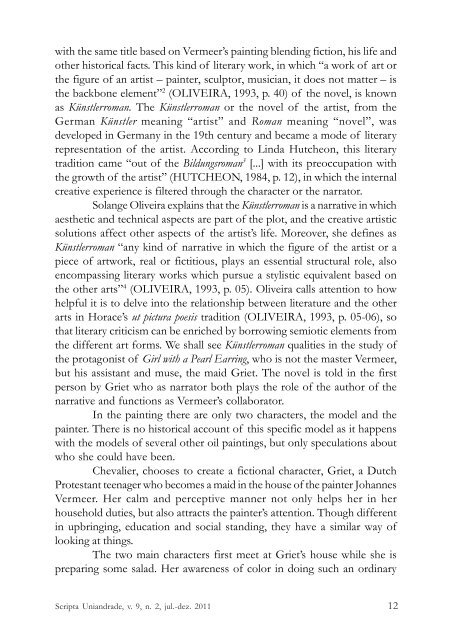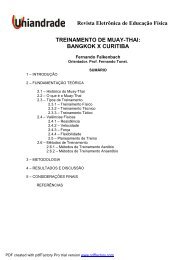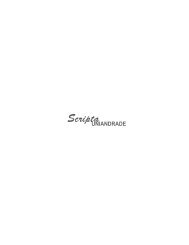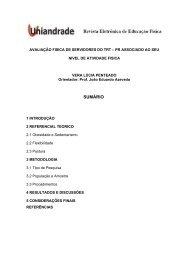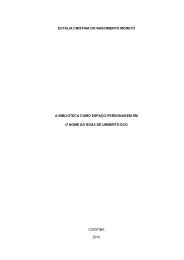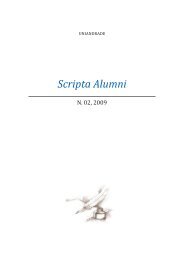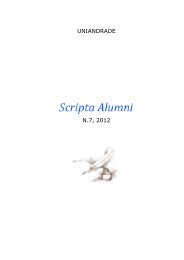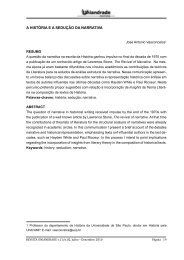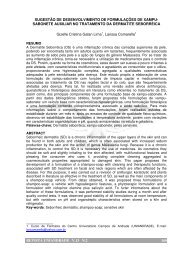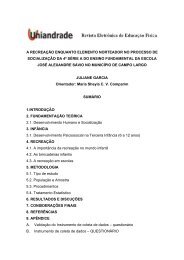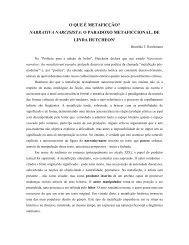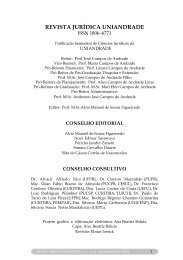Scripta 9_2_link_final.pdf - Uniandrade
Scripta 9_2_link_final.pdf - Uniandrade
Scripta 9_2_link_final.pdf - Uniandrade
You also want an ePaper? Increase the reach of your titles
YUMPU automatically turns print PDFs into web optimized ePapers that Google loves.
with the same title based on Vermeer’s painting blending fiction, his life and<br />
other historical facts. This kind of literary work, in which “a work of art or<br />
the figure of an artist – painter, sculptor, musician, it does not matter – is<br />
the backbone element” 2 (OLIVEIRA, 1993, p. 40) of the novel, is known<br />
as Künstlerroman. The Künstlerroman or the novel of the artist, from the<br />
German Künstler meaning “artist” and Roman meaning “novel”, was<br />
developed in Germany in the 19th century and became a mode of literary<br />
representation of the artist. According to Linda Hutcheon, this literary<br />
tradition came “out of the Bildungsroman 3 [...] with its preoccupation with<br />
the growth of the artist” (HUTCHEON, 1984, p. 12), in which the internal<br />
creative experience is filtered through the character or the narrator.<br />
Solange Oliveira explains that the Künstlerroman is a narrative in which<br />
aesthetic and technical aspects are part of the plot, and the creative artistic<br />
solutions affect other aspects of the artist’s life. Moreover, she defines as<br />
Künstlerroman “any kind of narrative in which the figure of the artist or a<br />
piece of artwork, real or fictitious, plays an essential structural role, also<br />
encompassing literary works which pursue a stylistic equivalent based on<br />
the other arts” 4 (OLIVEIRA, 1993, p. 05). Oliveira calls attention to how<br />
helpful it is to delve into the relationship between literature and the other<br />
arts in Horace’s ut pictura poesis tradition (OLIVEIRA, 1993, p. 05-06), so<br />
that literary criticism can be enriched by borrowing semiotic elements from<br />
the different art forms. We shall see Künstlerroman qualities in the study of<br />
the protagonist of Girl with a Pearl Earring, who is not the master Vermeer,<br />
but his assistant and muse, the maid Griet. The novel is told in the first<br />
person by Griet who as narrator both plays the role of the author of the<br />
narrative and functions as Vermeer’s collaborator.<br />
In the painting there are only two characters, the model and the<br />
painter. There is no historical account of this specific model as it happens<br />
with the models of several other oil paintings, but only speculations about<br />
who she could have been.<br />
Chevalier, chooses to create a fictional character, Griet, a Dutch<br />
Protestant teenager who becomes a maid in the house of the painter Johannes<br />
Vermeer. Her calm and perceptive manner not only helps her in her<br />
household duties, but also attracts the painter’s attention. Though different<br />
in upbringing, education and social standing, they have a similar way of<br />
looking at things.<br />
The two main characters first meet at Griet’s house while she is<br />
preparing some salad. Her awareness of color in doing such an ordinary<br />
<strong>Scripta</strong> <strong>Uniandrade</strong>, v. 9, n. 2, jul.-dez. 2011<br />
12


